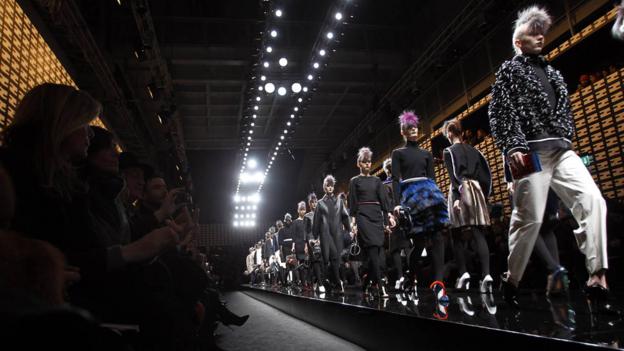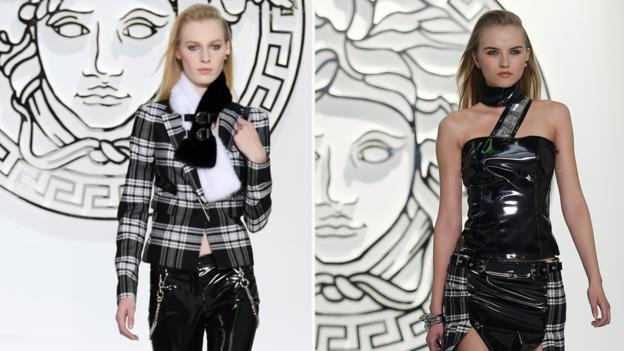-

-

-

- Talk about punk, and you’re liable to start an argument. It’s been
forty-odd years since Legs McNeil plastered downtown New York City with
posters reading, “Watch Out! Punk is coming!”, and still, the history
and the meaning of punk remains bitterly contested. Was punk a musical
phenomenon? An attitude? A Situationist riposte to the all-encompassing
grimness of 1970s Britain? Did Malcolm McLaren invent punk? Did The
Ramones? If a squatter in present-day south London covers a beat-up
jacket with studs, that’s punk, right? But what if Karl Lagerfeld puts
studs on a $5,000 Chanel jacket? Is that punk, too?
These questions, and others, are raised by the opening of Punk: From Chaos to Couture, the new show at the Costume Institute of the Metropolitan Museum of Art in New York. The exhibition is one of the highlights of the Met’s year. According to Andrew Bolton, the curator who conceived the show, the museum is anticipating attendance on par with its blockbuster Alexander McQueen exhibition two years ago. And the influence of From Chaos to Couture has already been seen on the runway, with mohawks at the Fall ’13 Fendi show, tartan everywhere from Versace to Junya Watanabe, and biker jackets pretty much ubiquitous. Bolton and his team have made the weather, fashion-wise.
But does the punk aesthetic still have force? That was the question that kept recurring to me, as all those punk-inspired looks made their way down the catwalk. I posed the question to Bolton: Does a studded jacket mean anything, in this day and age?
“I think it depends on how you define punk,” Bolton says. “If you define punk as a political phenomenon that emerged at a particular moment in England, then of course, it’s lost that meaning,” he says “I doubt that anyone looks at a studded jacket now, and thinks of garbage strikes,” he adds, referring to the wave of industrial action in 1970s Britain that left rotting rubbish to pile up in the streets.
As for Bolton, he defines ‘punk’ in terms of how it looks. From Chaos to Couture catalogues the key formal elements of punk, and documents their influence on high-end fashion. That’s all. The show is agnostic on its larger meaning. As a breakdown of those formal elements ¾ the DIY and the destruction, the use of found materials and hardware such as safety pins and studs ¾ the show is rigorous and interesting. But it’s not very helpful if you’re wondering whether a studded jacket can still be considered subversive. Or if you suspect that subversion is the essential thing about punk, aesthetics be damned.
Anarchy in the UK
If, as Bolton says, we all have to define punk for ourselves, then here goes. With all due respect to the legends mooching around New York club CBGBs in the early seventies, I’m going to define punk British-ly, because it was in Britain, and particularly in and around Vivienne Westwood and Malcolm McLaren’s shop Sex on the King’s Road in London, that punk obtained coherence as a confrontational stance against the mainstream. Punk music, punk fashion, and punk politics spoke with one voice. It was a bottle smashed in the face of convention, and what’s remarkable is how much of the early punk fashion still has the capacity to provoke.
“Look at that T-shirt Malcolm and Viv made, of the two cowboys,” notes the British jeweller Tom Binns. In Malcolm McLaren and Vivienne Westwood’s famous image, the cowboys are naked from the waist down, save for their boots. “Imagine, today, you’re walking down the street and you see someone in that shirt. You’d still be shocked! They were really going for it back then.”
Subscribe to:
Post Comments (Atom)







No comments:
Post a Comment